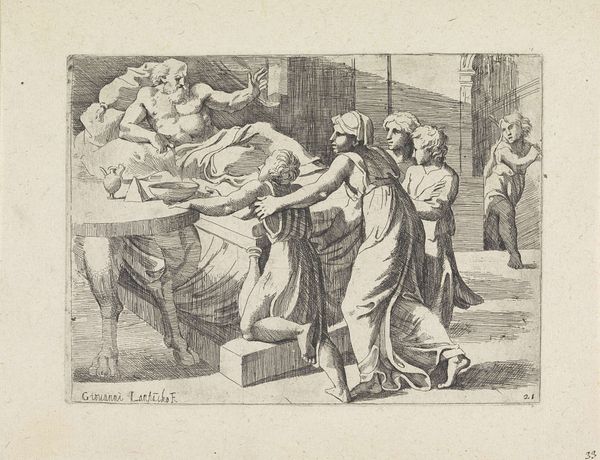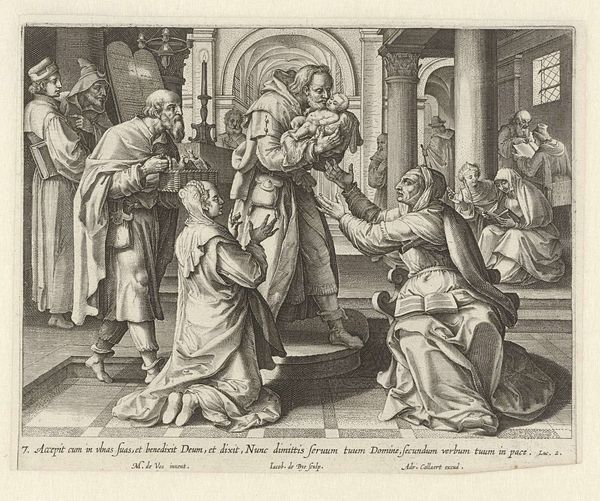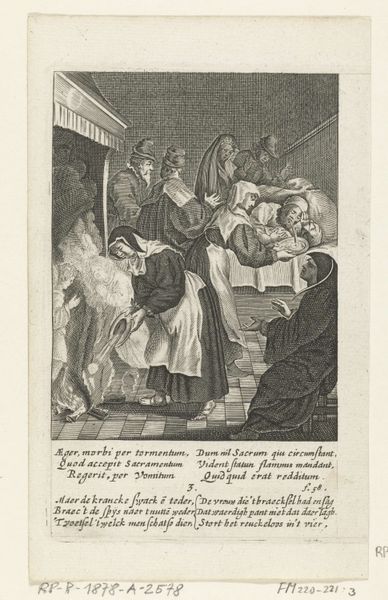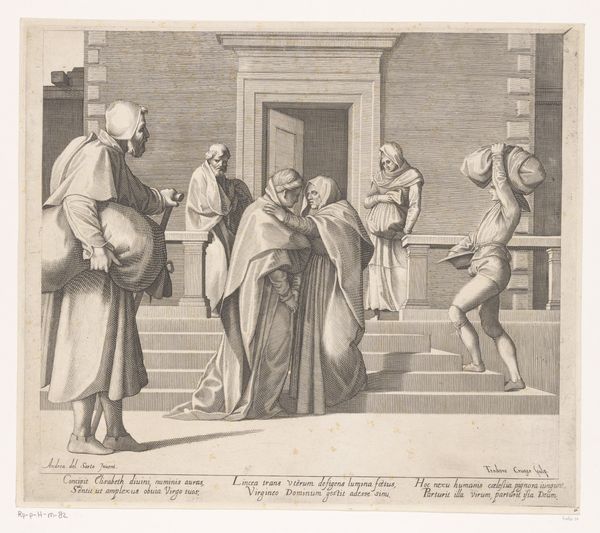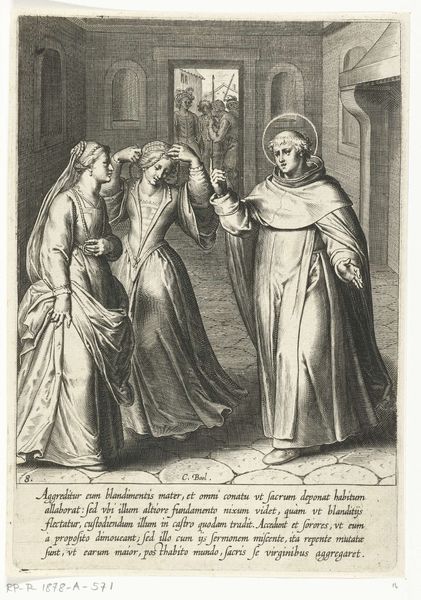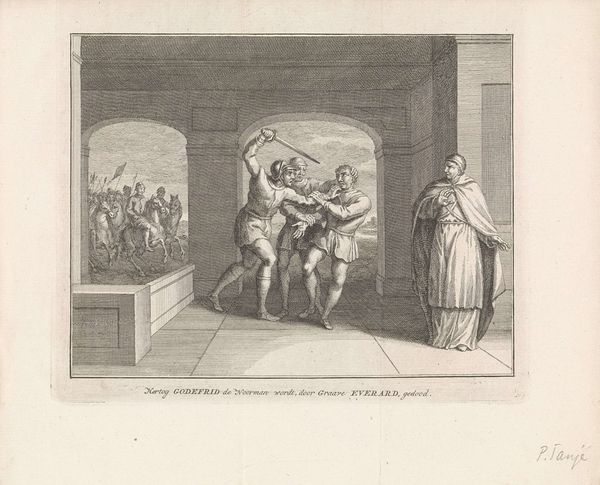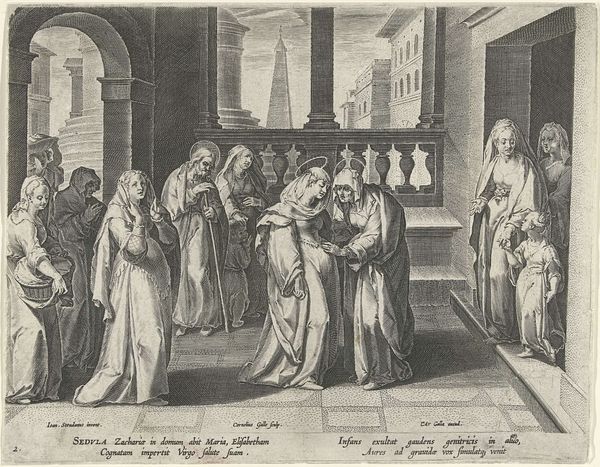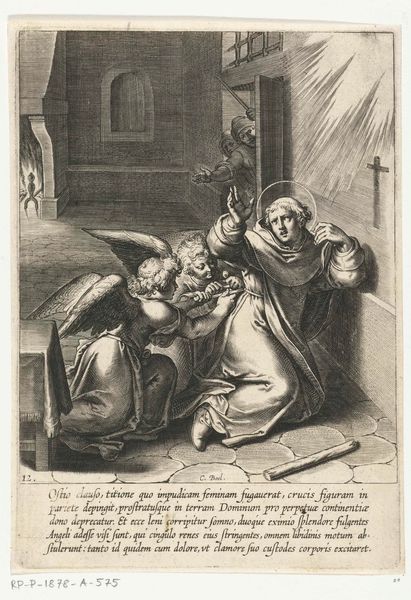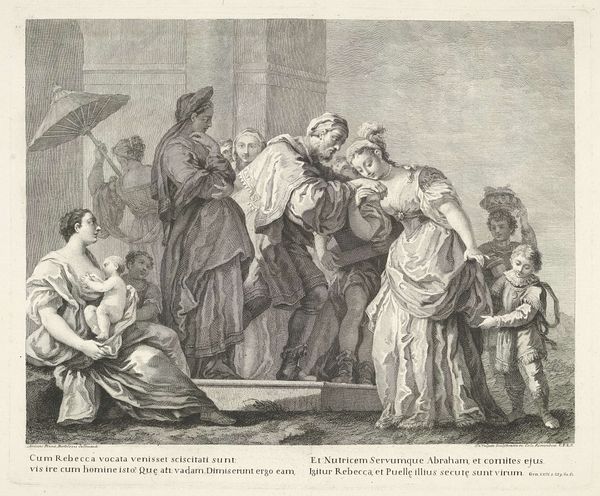
engraving
#
old engraving style
#
mannerism
#
figuration
#
history-painting
#
engraving
Dimensions: height 208 mm, width 256 mm
Copyright: Rijks Museum: Open Domain
Curator: Here we have "Lot and the Two Angels," an engraving from 1550-1570, found here in the Rijksmuseum. The print depicts a biblical scene, but what strikes me is how it’s rendered through the labor-intensive process of engraving. What are your initial thoughts? Editor: I’m immediately drawn to the incredible detail achieved through what must have been an extremely meticulous process. How does the method of production – the engraving itself – inform our understanding of this work? Curator: Excellent question. Consider the engraver as a skilled artisan translating narrative into repeatable form. This image wasn’t made for a single wealthy patron; prints allowed wider circulation of ideas. Notice how the artist carefully employs line weight and density to simulate textures. Think about the socio-economic context: The materials needed, the skills honed over years of apprenticeship, and how this impacted what and for whom they were creating. The means of production are tightly intertwined with the message. How does that impact its status in relation to, say, painting, which at the time would be considered ‘high art’? Editor: That challenges my perception! So the artist’s labor, the accessibility of the print… it shifts our focus from pure artistic genius to a broader context of production and consumption. Does Mannerism, with its artificiality, reflect the engraver's imposed will over the image through a complex process? Curator: Precisely! Mannerism revels in artifice. The engraving emphasizes the constructed nature of the image. Even the idealized figures, caught in elegant poses, remind us of the deliberate hand guiding the burin. The social status and the means by which images are made speak to entirely different consumption methods as well as aesthetics. Editor: I hadn't thought about the socioeconomic aspects of printmaking influencing artistic choices so profoundly. I’ll definitely consider that going forward. Thanks for illuminating that for me! Curator: Indeed, looking closely at materiality always deepens our insights!
Comments
No comments
Be the first to comment and join the conversation on the ultimate creative platform.


